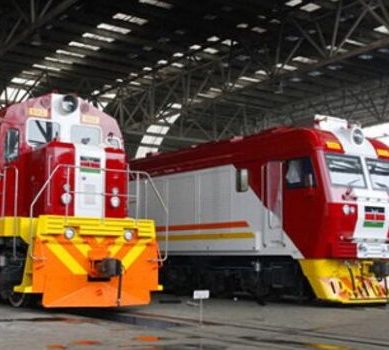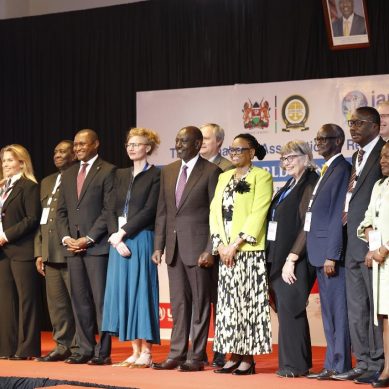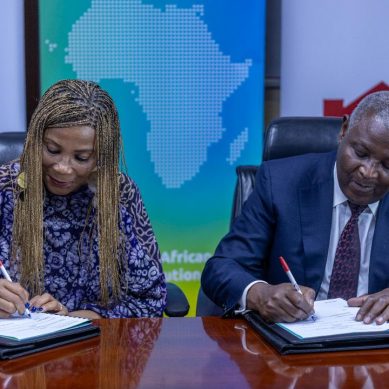
Ukraine’s President Volodymyr Zelensky recently signed off on a long-debated mobilisation law to bolster Ukraine’s armed forces, which number around 800,000. The law, passed in April, lowers the draft age to 25 from 27.
However, the government hasn’t said how many new conscripts the law would yield, and how soon they can reinforce the troops already on the frontline.
“It’s not like how it looks on a map, with all these pretty lines and arrows,” Viktor, an infantryman in Ukraine military, says. “I see my friends, what’s happened to them, what we’re fighting. It’s hell. It’s worse than hell.”
In February, the constant Russian assaults, sleep deprivation, and fear finally got to Viktor. He woke up one morning frozen with terror, physically unable to go to his position.
“I couldn’t calm myself down,” he says. “Not even that I didn’t want to go, but I couldn’t go. I was physically and mentally tired.”
Viktor was paralysed by anxiety. What if he failed to do his job properly, what if something went wrong with his gun, what if he let down his comrades, whom he calls his “brothers” and considers his second family? He shared his concerns with his company commander. Despite a severe shortage of soldiers on the front, the commander gave Viktor a few days of rest and time to talk with a psychologist. That short reprieve saved him and helped reframe his fear of death.
In the past, he used to think of death as a distant possibility. “But in a war, you’re completely unprotected,” he says. “Death can come at any moment. I’m starting to get used to the idea of death … that it can happen, and you can’t escape it.”
“The psychologist said that a person who has faith understands that in death the spirit leaves the body and only a shell remains on earth.”
Viktor’s ideas are blurrier when it comes to what follows death, but he knows, with certainty, that there is no salvation for the Russian soldiers who marched into Ukraine.
“I think they’re churning in hell,” he says.
Viktor’s eyes suddenly flick up. The whistle of incoming artillery makes him duck for cover.
“Get in the hole!” he yells, his voice drowned out by a shattering boom as he flattens himself against the dirt floor of the trench. Another whistle, this time closer, then a sound of impact, of metal meeting earth. The dirt walls of the trench vibrate. Then all is quiet for some time.
A little while later, the exhausted voice of a Ukrainian soldier crackles over the radio, asking for help. The soldier’s position, a few hundred metres away from Viktor’s trench, has been hit by what appears to be Russian suicide drones, which smash into their targets laden with explosives.
“One 200, three 300s,” the soldier says over the radio, using military code: one dead and three wounded.
“What are my instructions?” he asks, panting slightly. The soldier is ordered to hold his position and not attempt to cross the minefield.
“Plus plus,” he sighs, acknowledging the order.
A few minutes later, the same soldier’s voice returns to the radio.
“What are my instructions?” he asks again, audibly out of breath.
“He’s concussed,” Viktor says, noting the soldier’s confusion and slurred speech, signs of possible head trauma.
He slumps against the white sandbags that line the walls of his trench and takes off his helmet. “They’re not going to be able to rescue them until dark.”
Over the radio, the injured soldiers are told to wait until nightfall – more than eight hours – for a medevac team to extract them. From there they could be taken to a stabilisation point, a medical facility close to the frontline where wounded soldiers receive emergency aid. The commander says another group of men will be transported to hold the position at the same time.
“Do not leave your post,” he tells the soldier on the radio, instructing him to drink water and stay awake.
Several more explosions are heard from the injured men’s position.
“They’re trying to finish them off,” Viktor says, as the radio crackles again with the voice of the soldier. Several more Russian drones are swooping on their position and dropping munitions.
Viktor takes another drag of his cigarette. He’s lost count of the soldiers he’s seen injured or killed. There was a cheerful soldier in his twenties he shared a trench with last fall. He was killed in a heavy mortar attack while Viktor was away from the position for a few days of rest. Asked for the young soldier’s name, Viktor hesitates and squeezes his eyes shut.
“I can’t even remember,” he says after a pause. “I can’t even remember where he was from.”
More than anything, Viktor wishes he could go home, but he says the chances of another soldier replacing him soon at his front-line position are slim.
The final mobilisation law passed in April did not include a provision in an earlier version that would have rotated out soldiers who had already served 36 months of duty. Ukraine’s defence ministry is now considering a new law that will address demobilisation. Even with the mobilisation push, many young Ukrainian men do not want to be sent to challenging front-line trenches like Viktor’s, soldiers and officers in his brigade say.
“No one will trade with us,” Viktor says. “Who would want to come here?”
So, he stands guard at his Browning, listening and watching. For hours, the radio crackles on as the injured soldiers wait for the skies to darken. Viktor, ever alert in his trench, looks up at the midafternoon sky. A deeper buzzing sound can be heard approaching, a sound that resembles a larger drone carrying a heavier payload. The sound comes closer, then hovers, suspended above the trench. Viktor strains to hear against the wind. The buzzing moves away, towards the Russian position.
“Ours,” he says.
A few dozen kilometres away in a demolished village in the southern sector of Donetsk region, another soldier stares at a bank of computer monitors in the dark basement of a command observation point. Roman, a 38-year old commander of a fire support platoon, squints at the screens, a cherry-flavoured cigarette hanging from the corner of his mouth. On one screen is a grid of thermal images, including one showing a tree line in his sector of the Donetsk front.
There is no movement. But Roman knows there are Russian dugouts under the trees. He leans back in his leather armchair and scratches behind the ears of his dog, Marcel, a mixed breed he found in the destroyed village. Another soldier, one of the men in Roman’s drone unit, coughs in his sleep as he shifts on an army cot set up in the room.
Drones have been used in wars before, but their use has exploded in the war in Ukraine. Russian and Ukrainian forces are now racing to develop and deploy a variety of unmanned aerial vehicles or UAVs, that can carry out precision attacks, destroying everything from dugouts to multimillion dollar tanks.
Ukrainian soldiers and commanders say aerial vehicles initially gave them an edge over Russia. They now say Moscow is far outpacing their ability to produce them, in particular the lower-cost first-person view drones or FPVs, which can be laden with explosives and crashed into targets.
Like thousands of other Ukrainians, Roman volunteered to fight in 2022. At the time of Russia’s full-scale invasion, he had been living in Marseille, after almost eight years working and living abroad. He grew up in a working-class village outside of Kyiv with a single mother and left Ukraine to search for a better life. In Marseille, he met his French wife, opened a small pizza restaurant with friends, and spent his free time walking his dog and swimming in the brisk waters of the ocean.
“I was really living my dream, it was everything I wanted after struggling for so long,” he says.
When war broke out, his wife and mother begged him not to return to Ukraine. But Roman felt he wouldn’t be able to look himself in the mirror if he didn’t volunteer. He quickly joined up with Ukraine’s police taskforce, which has fighting units, first heading to the southern Ukrainian cities of Mykolaiv and Kherson before moving to Bakhmut in Donbas.
In December of 2022, Roman formally joined the military. Last year, he was assigned to accompany one of Ukraine’s deadliest snipers, Vasya, who has more than 440 kills, according to the press officer of Roman’s brigade. Vasya has been given the prestigious “Hero of Ukraine” title, a presidential award usually bestowed posthumously, although he is still alive. Roman, who has combat lifesaving training, was tasked with protecting Vasya and keeping him alive as they stalked Russian soldiers in the thick of the Kreminna Forest.
In his new role, Roman oversees 32 soldiers in the 58th Motorised Brigade who are fanned out across mortar and drone positions in the Donetsk region. Roman’s war is now waged almost entirely on monitors.
“It looks like a fucking video game,” he says, toggling between the different windows on his screen.
A few kilometres closer to the front, three soldiers in Roman’s unit sit in a cramped dugout, waiting for Roman’s orders to launch the drone. Denys, a drone pilot and youngest of Roman’s platoon at 21, sits in the corner vaping as another soldier teases him for being too green and stupid.
“He’s senile, don’t listen to him,” Denys says, pointing to the older soldier, who is in his 30s. “They’re so desperate for fighters they’re recruiting from homes for the elderly.”
The two soldiers banter on. Serhii, their explosives expert, listens with a smile. Unlike artillery and other longer-range drone teams, units like theirs need to sit closer to Russian positions because their reconnaissance drones normally have a shorter range. Day and night the soldiers sit underground, waiting for an order to fly the DJI Mavic, a quadcopter that they use to surveil the sector and drop bombs on Russian targets.
Roman’s voice comes over the speaker of Denys’ phone and the men spring into action. Denys balances the drone controller on one leg, while Serhii attaches a freshly charged battery to the Mavic. Once in the air, the drone sweeps over a field pockmarked by artillery rounds. The soldiers watch its video feed on a small screen: It ascends higher as it flies over two Russian heavy vehicles destroyed by mines. On the horizon, a line of trees appears.
“Denyska, climb higher, you’re flying for reconnaissance,” Roman can be heard telling his drone pilot.
“I’m climbing,” Denys says.
“Higher. Fly sideways,” Roman orders.
As the tree line comes closer, Denys scans for movement on a small monitor.
“No, there’s nothing,” he says.
“Okay, come back, I’ll watch everything on streams,” Roman says, referring to the live feeds from other reconnaissance drones, as he searches for targets.
The next day, one of the reconnaissance flights spots a Russian soldier standing under a thick cover of trees.
“He doesn’t see the drone so he thinks he’s safe,” Roman says in his bunker, looking at the Russian man in fatigues on his screen. “But nobody’s safe.”
Mouth still wet from brushing his teeth, the Russian soldier squints as he tries to make out the soft whirring sound. He turns to say something to his partner, then spots the Ukrainian drone. He dives into a hole under the trees, just as Denys drops a homemade bomb right on top of it.
“Fucking great! Good boy!” Roman exclaims, staring at a plume of dust and smoke rising from the hole.
Denys asks Roman to repeat the praise.
“I told you you’re great, do you need anything else?” Roman jokes.
Leaning back in his armchair, Roman taps the tip of an unlit cigarette on the back of the pack. Marcel, the dog, trots over to him to lean against his legs.
“The idea is – let them be scared. We want them to sit in their holes and not even pop their heads up. If any time you see movement you throw something at them, you throw FPV, you fly a drone, you hit them with artillery, you shoot them with a machine gun, they’ll be scared even to go to the toilet,” says Roman.
- A Reuters report








